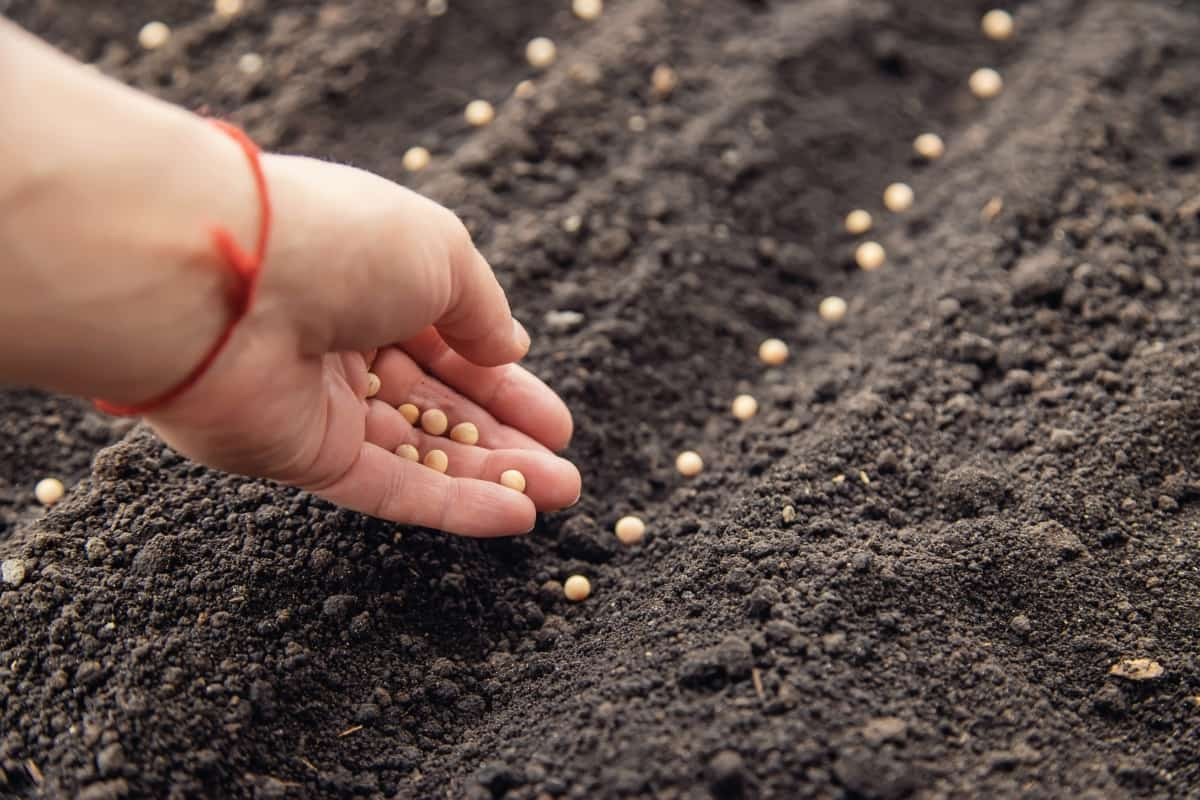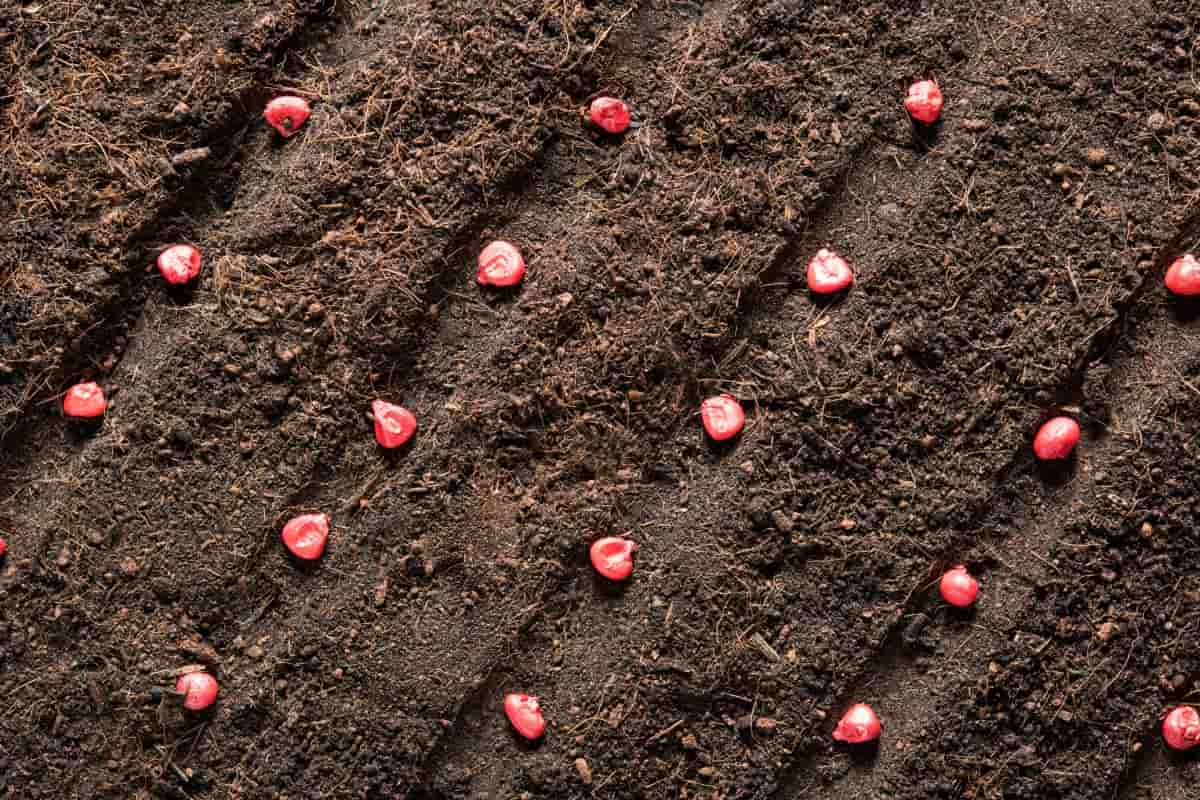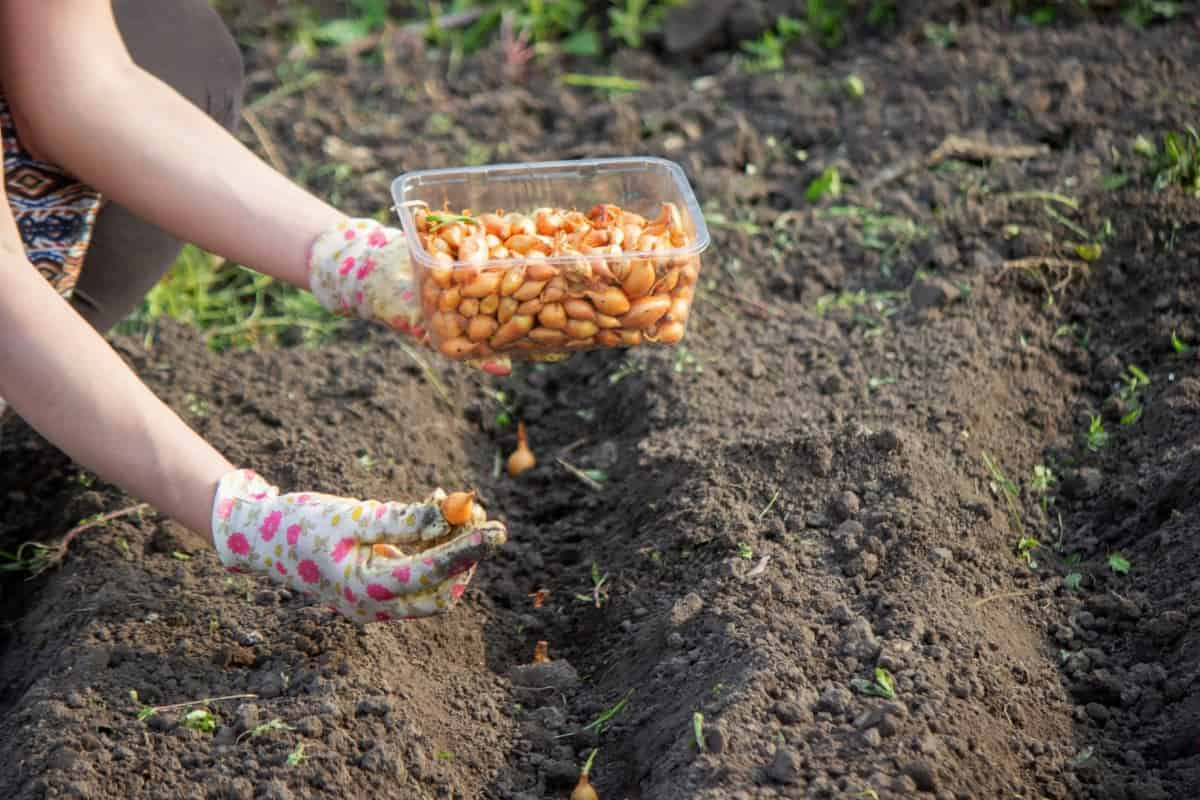Embarking on the journey of seed sowing is a rewarding endeavor, offering the joy of watching life grow from a tiny seed to a flourishing plant. These tips, ranging from selecting the right seeds to providing consistent care, are designed to guide both novice and experienced gardeners through the successful cultivation of plants from seeds.

10 Best Essential Tips for Seed Sowing
Choose the Right Seeds for Your Location
When embarking on seed sowing, whether indoors or outdoors, selecting the right seeds is crucial. This choice influences the success of your gardening, as each plant variety has specific needs and preferences. For effective seed sowing, consider the climate and environmental conditions of your location. Some seeds thrive in cooler climates, while others need more warmth.
Checking the seed packets for growth requirements and hardiness zones helps in making an informed decision. This step is vital in the process of growing plants from seeds, as it sets the foundation for healthy growth and development. High germination seeds, those known for their strong and consistent ability to sprout, are preferable, especially for beginners. These seeds often promise a higher success rate, making your gardening journey more rewarding and less frustrating.
Prepare the Soil for Seed Sowing
The quality and condition of the soil directly affect seed germination and the subsequent growth of the plant. For optimal results, use well-draining soil that is rich in organic matter. This type of soil provides the necessary nutrients and aeration for seeds to sprout effectively. If you’re planting seeds outdoors, ensure the soil is loose and free from large clumps or stones. In the case of indoor sowing, using a high-quality potting mix is advisable.
The soil’s pH level also plays a crucial role, as different plants have varying pH preferences. Testing the soil’s pH and adjusting it according to the needs of the seeds you’re planting can significantly improve germination rates and plant health. Remember, well-prepared soil is the foundation of a thriving garden.
Understand Seed Depth and Spacing
Understanding seed depth and spacing is vital for successful germination and growth. Planting seeds at the correct depth ensures they have the right conditions for sprouting, as too deep planting can make it difficult for seedlings to reach the surface, while too shallow planting may expose them to the elements. Generally, the size of the seed can guide you on the planting depth – larger seeds can be planted deeper than smaller ones.
In case you missed it: How to Plant Rice: Seed Sowing, Best Time and Methods to Plant Rice

Having enough space for your plants matters because if they’re too close together, they can’t get enough air, nutrients, and water, which is not good for them. Follow the guidelines provided on seed packets for both depth and spacing. This information is tailored to each plant type, offering the best advice for optimal growth. Adhering to these guidelines is a crucial tip to planting seeds, especially for beginners, as it helps in establishing a healthy and well-organized garden.
Provide Adequate Water and Moisture
Water and moisture are essential for seed germination and growth. Providing adequate water starts from the moment of sowing and continues throughout the plant’s life cycle. Seeds require consistent moisture to germinate; therefore, the soil should be kept evenly moist but not soggy. Overwatering can lead to rotting, while under-watering might cause the soil to dry out, hindering germination.
To keep soil moist for seeds, use a light spray or gentle watering can. Seeds don’t need direct sun to grow; too much can dry the soil fast. However, once the seeds have sprouted, providing them with adequate sunlight is crucial for healthy growth. Balancing water and light is a key aspect of seed germination improvement and should be carefully managed for successful seed sowing.
Protect Seeds from Pests and Diseases
Protecting seeds from pests and diseases is a crucial aspect of successful gardening. Pests and diseases can severely impact seed germination and the health of young seedlings. Start by choosing disease-resistant seed varieties, as they are less likely to succumb to common garden ailments. If you’re sowing outdoors, consider using physical barriers like netting or row covers to protect the seeds from birds, insects, and other pests. In both indoor and outdoor settings, maintaining cleanliness is vital.
Use clean containers and tools to prevent the spread of pathogens. Regularly inspecting your seedlings for signs of disease or pest infestation allows for early intervention, which is key in managing these issues effectively. Employing natural or organic pest control methods can also safeguard your plants without the use of harsh chemicals. Remember, prevention is better than cure, so taking proactive steps to protect your seeds and seedlings is a top priority in gardening.
Use the Right Containers or Planting Beds
Using the right containers or planting beds is essential for seed sowing, especially when starting seeds indoors. The choice of container can affect the moisture levels, root development, and overall health of the plants. For indoor seed starting, use containers that are deep enough for root development and have drainage holes to prevent waterlogging. Seed trays, peat pots, or even recycled containers can be effective as long as they meet these criteria.
When transplanting seedlings outdoors, choose a planting bed or container that suits the size and growth habits of the mature plant. Ensure the planting area has good soil and adequate sunlight and is accessible for regular maintenance. Whether you’re using raised beds, traditional garden plots, or containers, proper preparation and selection tailored to your plant’s needs will significantly contribute to its success and growth.
Monitor and Adjust Light Conditions
Monitoring and adjusting light conditions is crucial for seedling growth and development. After germination, most seedlings require plenty of light to grow strong and healthy. If you’re growing seeds indoors, place the seedlings near a bright window or use artificial grow lights. It’s essential to ensure that the seedlings receive adequate light but are not exposed to overly intense sunlight, which can cause scorching.
In case you missed it: Seed Propagation of Pawpaw: Germination Process, Sowing, and Seedling Care

If the seedlings are stretching toward the light or appear leggy, it’s a sign they need more light. For outdoor seedlings, gradual acclimatization to direct sunlight is important. This process, known as hardening off, involves gradually introducing seedlings to outdoor conditions over a week or two. Proper light management is key in the process of growing plants from seeds, as it directly impacts the plant’s vigor and health.
Apply Proper Fertilization
Applying proper fertilization is essential for the growth and health of seedlings. While seeds contain enough nutrients to support initial growth, seedlings will soon need additional nutrients to continue developing. When it comes to fertilization, it’s important to strike a balance, as both under-fertilizing and over-fertilizing can be detrimental.
Use a balanced, water-soluble fertilizer at a reduced strength, especially when dealing with young seedlings. This will provide a steady supply of essential nutrients without overwhelming the plants. Fertilize regularly, following the product’s instructions, and observe the seedlings’ response to adjust the feeding as needed. Organic options are also available for those who prefer a more natural approach.
Know when to Transplant Seedlings
Knowing when to transplant seedlings is a crucial step in the seed-sowing process. Transplanting is necessary when the seedlings have outgrown their initial containers or when they need to be moved to their final growing location. The right time to transplant is typically when seedlings have developed their second set of true leaves. At this stage, they are strong enough to handle the stress of transplanting.
When transplanting outdoors, make sure to harden off the seedlings to prepare them for the outdoor environment. This gradual introduction to outdoor conditions reduces transplant shock and improves the seedlings’ chances of thriving. Transplanting at the appropriate time and with care ensures that the seedlings have enough space and resources to continue growing robustly.
Maintain Consistent Care and Attention
Maintaining consistent care and attention is the final but ongoing step in successful seed sowing. Regular monitoring and care are essential for the health and growth of your plants. This includes watering consistently, keeping the soil moist but not waterlogged, and checking for signs of pests or diseases.
In case you missed it: How to Grow Jackfruit from Seed: Seed Germination, Spacing, Sowing, and Care

Adjusting care based on the plants’ growth stages and environmental changes is also important. For instance, as plants grow, their water and nutrient needs may increase. Regular weeding, if growing outdoors, ensures that your plants are not competing for nutrients and water. Additionally, providing support structures for climbing or sprawling plants can aid their development. Consistent care and attention, tailored to the specific needs of your plants, are the keys to nurturing them from seed to maturity.
Conclusion
Mastering the art of seed sowing involves a blend of knowledge, patience, and attentiveness. By following these essential tips, gardeners can nurture their seedlings from the fragile beginning stages to robust, mature plants, ultimately reaping the rewards of their dedication and care in the vibrant life of their gardens.
- Feed Your Flock for Less: Top 10 Tips to Save on Chicken Feed
- Ultimate Guide to Ossabaw Island Hog: Breeding, Raising, Diet, and Care
- Hatching Answers: The Top 10 Reasons Your Chickens Aren’t Laying Eggs
- Eggs and Economics: Breaking Down the Cost of Raising Backyard Chickens
- Defend Your Greens: Proven Methods to Keep Iguanas Out of Your Garden
- Ultimate Guide to Cinnamon Queen Chicken: A Comprehensive Guide for Beginners
- Ultimate Guide to California Tan Chicken: Breeding, Raising, Diet, Egg-Production and Care
- Ultimate Guide to Marsh Daisy Chicken: Breeding, Raising, Diet, and Care
- 10 Types of Chicken Farming Businesses You Can Start for Profits